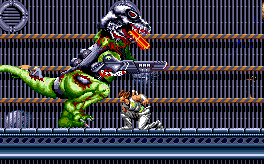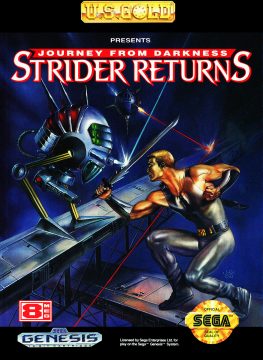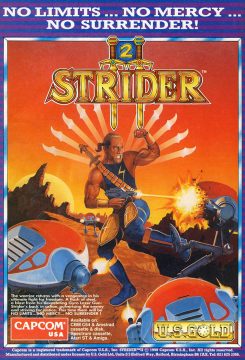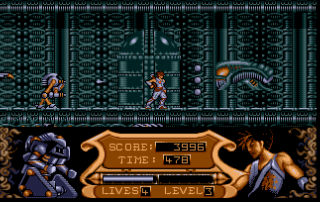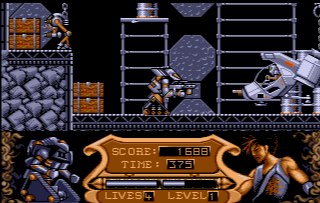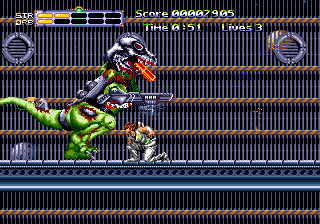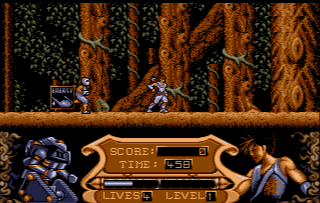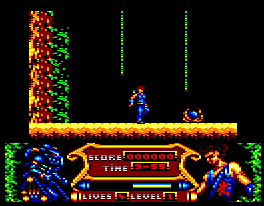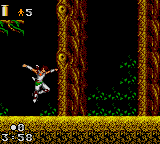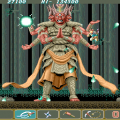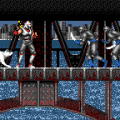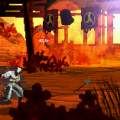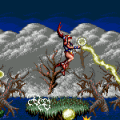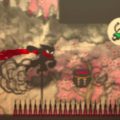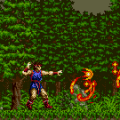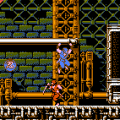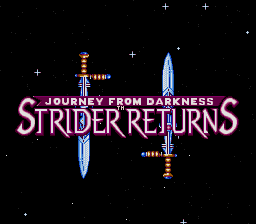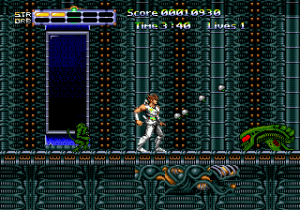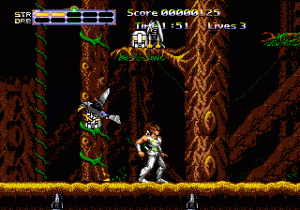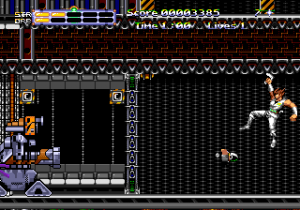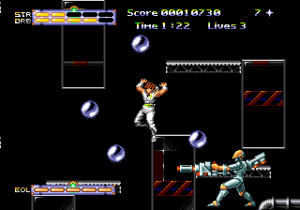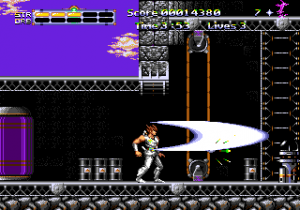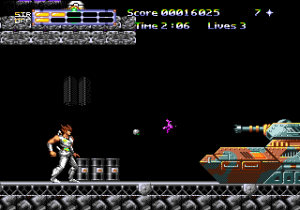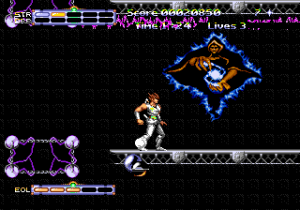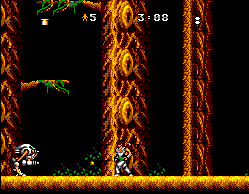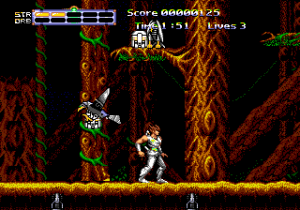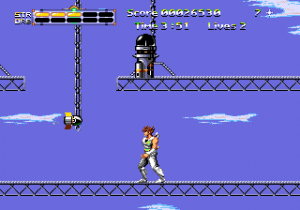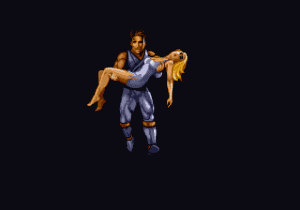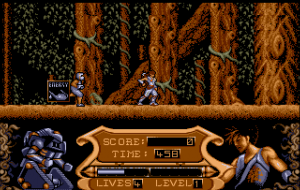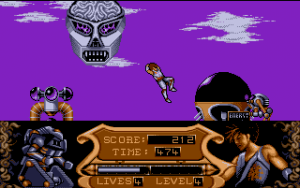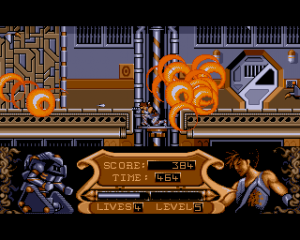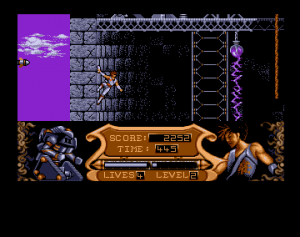First things first – this game is not considered canon in the Strider franchise. It was not developed by Capcom Japan, and is largely regarded to be an incredibly poor title. It was developed by Tiertex, who had created the home computer ports of the first Strider. Building on that same technology, they created a completely new game, using the Strider name under license from Capcom. It was not originally conceived as a sequel to Strider, but rather an original game called T.O.R. (“Transforming Overland Robot”). According to employees of Tiertex, the artists used sprites from Strider as placeholders during development, but management eventually decided to turn it into an official Strider game. It was originally known as Strider II – however, the game was significantly revamped when it was ported to the Genesis and Sega 8-bit platforms. This version was released in North America under the name Strider Returns: Journey from Darkness. All versions were published in America and Europe by U.S. Gold.
The story takes place after the original game, as Strider is summoned to the planet Magenta in order to rescue Princess Lexia. Considering the Cold War themes of the original games, the swerve into sci-fi territory is very odd. Also, due to rights concern, you are not technically playing as Strider Hiryu. Since the character is still owned by Moto Kikaku, the protagonist is known simply as “The Hero” in the original computer versions, and renamed Strider Hinjo for the Sega versions. However, he looks identical, except for a white outfit instead of a blue one.
Out of the home computer versions, the “best” is the Amiga release, while the Atari ST release is very similar. It looks and feels like their respective computer ports of the first game, right down to the gigantic status bar. However, the game runs much more smoothly. However, everything else is substandard. All of the sound and music are straight from the port of the first game. The level design isn’t a patch on the original, consisting largely of bland maze-like environments. In fact, the non-linear stages prove to be a problem, considering the tight time limit. The only reason why you might want to explore is to find energy power-ups scattered about. You see, when you meet each boss, Strider will transform into a robot. Yes, a robot. On the plus side, it wields a laser that’s more powerful than his sword. On the downside, it can’t jump, which is extremely dumb considering some of the bosses are airborne. As a robot, getting hit will deplete your energy rather than your life meter, which does give you some advantage, at least until you run out and turn back into human form.
There are five levels in total – a jungle, a castle, an H. R. Giger-esque alien fortress, an exterior sky stage, and the final lair. The bosses, for the most part, are boring – tanks, helicopters, cybernetic men, and so forth. The only unique one is a flying robotic head with an exposed brain. Most of the power-ups from the original Strider, save for a spinning orb, are missing. To compensate, you now wield a gun, which is strange.
As for the other computer ports, the Commodore 64 version is uglier, as the hero is now completely blue, with a whole new soundtrack by Mark Tull. The Amstrad CPC and ZX Spectrum versions are more simplified – the former runs terribly but has more colorful graphics, while the latter has few colors but runs fairly well.
The Genesis port, released two years after the original computer versions, has some substantial changes. The graphics have been redone in order to more closely replicate the original Genesis Strider. It’s a step up from the computer versions, though still quite a bad game. The visuals are bland, and the animation is still choppy. The tempo has been drastically toned down from the original Strider, partially due to all of the slowdown that occurs through the simplest of actions. Even compared to the Amiga Strider II, it feels slow. There are some changes though, as you can now slide, and toss shurikens instead of using a gun.
The level themes are the same (though the third and fourth levels are swapped), and for the most part, they have been entirely redesigned. However, they are still rather poor. For example, right at the beginning of the game, you need to climb upwards through some trees. There are mechanical eagles floating above, and at that point an upwards attack really would come in handy. That never seemed necessary in the original Strider, but in this game, the enemies are cheap and annoying from the very beginning. There are dangerous plants that are hard to see and spawn just next to Hinjo and explode, and stationary posts which launch so many bombs that the only way to avoid pain is to destroy them immediately. This is only the first level. The second area, featuring a maddening maze of purple lasers, is insane enough to drive a person to kill. Hinjo can only take three hits by default, and with only three continues, the difficulty is more than unreasonable.
The music is all new, but extraordinarily bland and primitive sounding. There are also cutscenes between levels, like the original Strider, replete with cheesy speech samples.
The boss battles have been revamped from the computer release. The robot transformation is gone, plus Solo and Meio from the first game return. There are a few new enemies too, that are more inspired than the rest, like the zombie dinosaur.
This version was also ported to the Master System and Game Gear, which outside of screen resolution, are identical. The levels are completely different than the 16-bit version, but otherwise it’s pretty similar. At least they run smoother than the SMS port of the original Strider.
Comparison Screenshots
